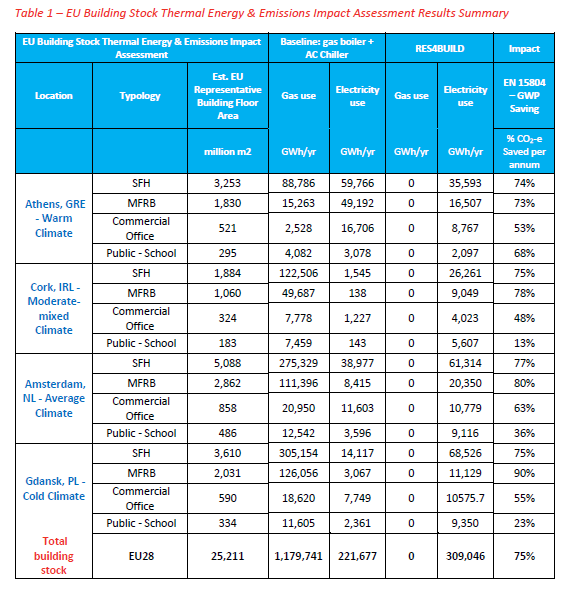As part of the wider RES4BUILD framework, a report led by partners ARUP assessed the possible impacts in terms of operational greenhouse gas reduction of the Integrated Energy Solution (IES) proposed and tested within the RES4BUILD project. To do so, innovative simulation- and numerical tools were developed to calculate the prognosed emission reductions in switching from conventional solutions to the proposed IES.
Detailed research of the European Building Market, using existing statistical data, supports the selection of 4 typologies in 4 different climates. The research presents a clear outline of the stock, indicating a majority of area in the residential sector and a high density of property in the North & West regions. Renovation and innovative solutions are required as the majority of building stock uses fossil fuels like gas or oil for the major share in energy use: space heating.
In this scenario analysis, there is a full reduction in fossil fuel consumption as the RES4BUILD system is electricity based. However, the EU28 model only represents an estimated 86% of the building stock and therefore assuming fossil fuel use in all other buildings it is an 86% reduction in fossil-fuel consumption. Results from the detailed comparison analysis indicate implementation of the RES4BUILD system on the building typologies of SFH, MFRB, Commercial office, and Public-School across the EU would result in an estimated 75% reduction in GWP CO2e emissions compared to a typical gas boiler and AC system. The GWP % CO2e savings will improve as the electricity grid continues to decarbonise. This is shown in table 1.
It is noted that this a high level ‘best case’ scenario with full implementation of the RES4BUILD system. In reality there is likely to be several barriers and market constraints to the RES4BUILD system that will limit implementation. This will be investigated further in Task 7.2.
For the full report visit www.res4build.eu/results and look for D7.1.

